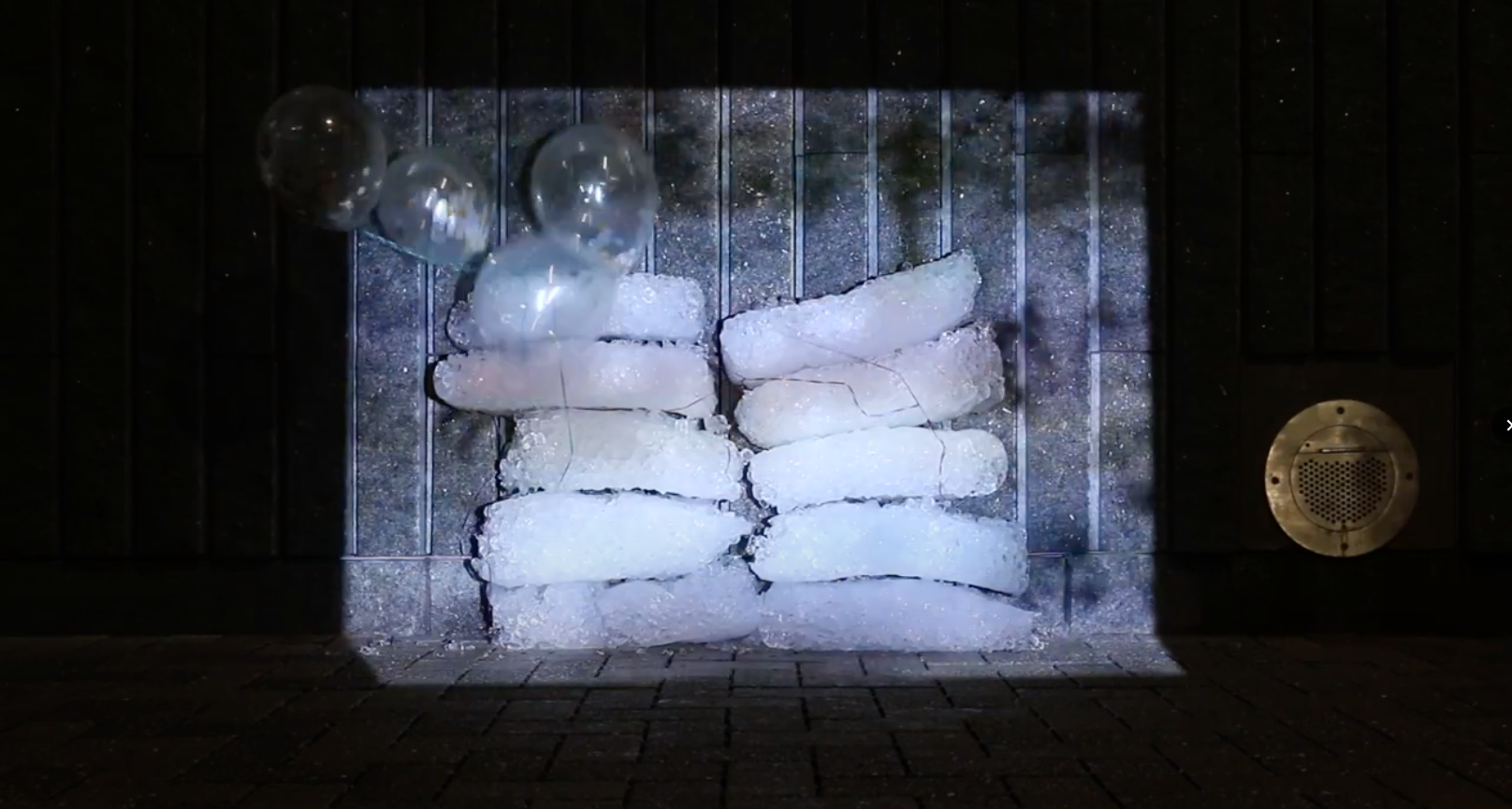
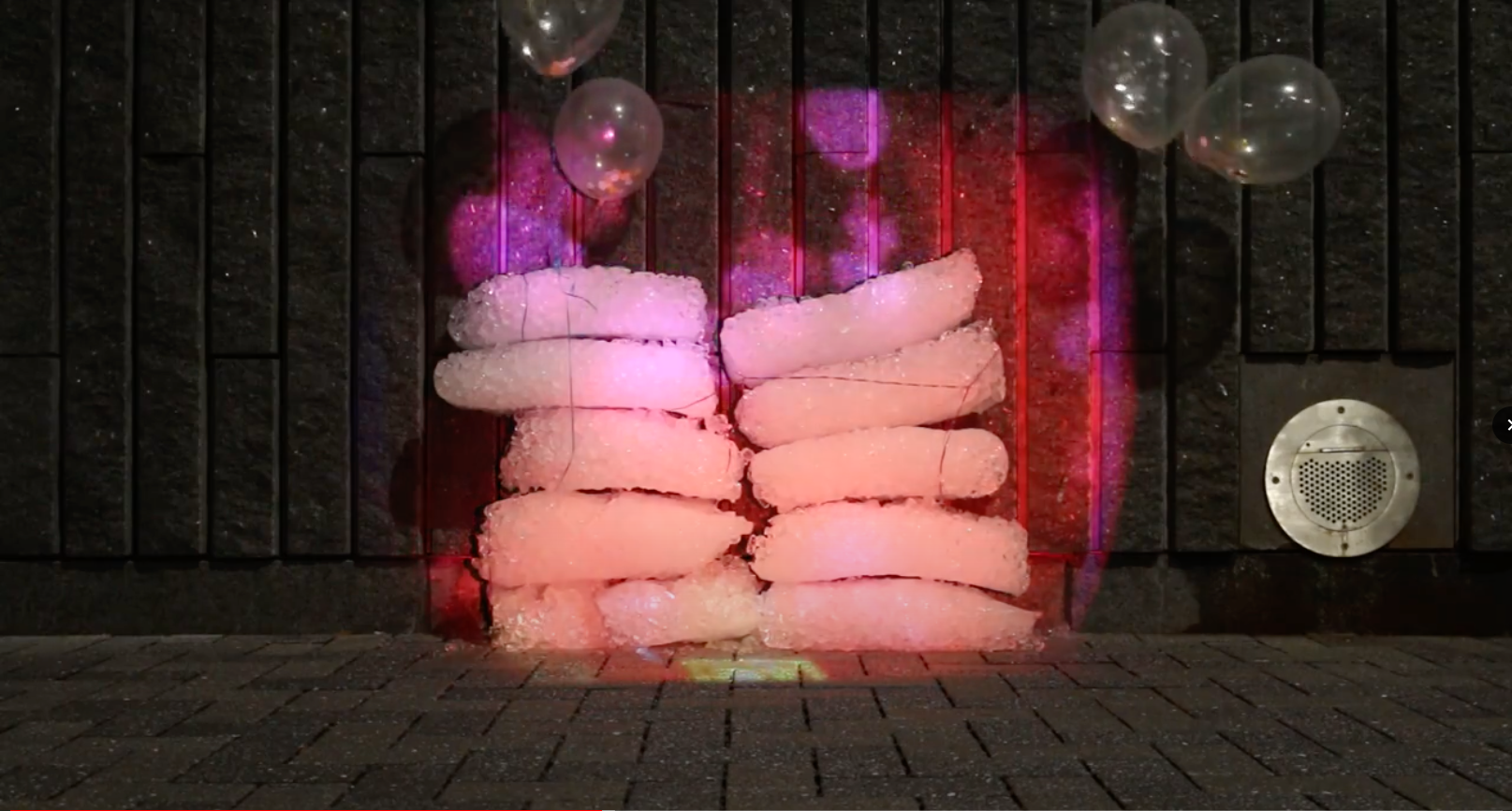
Student: Sitong Cao, 2019, outdoor video installation

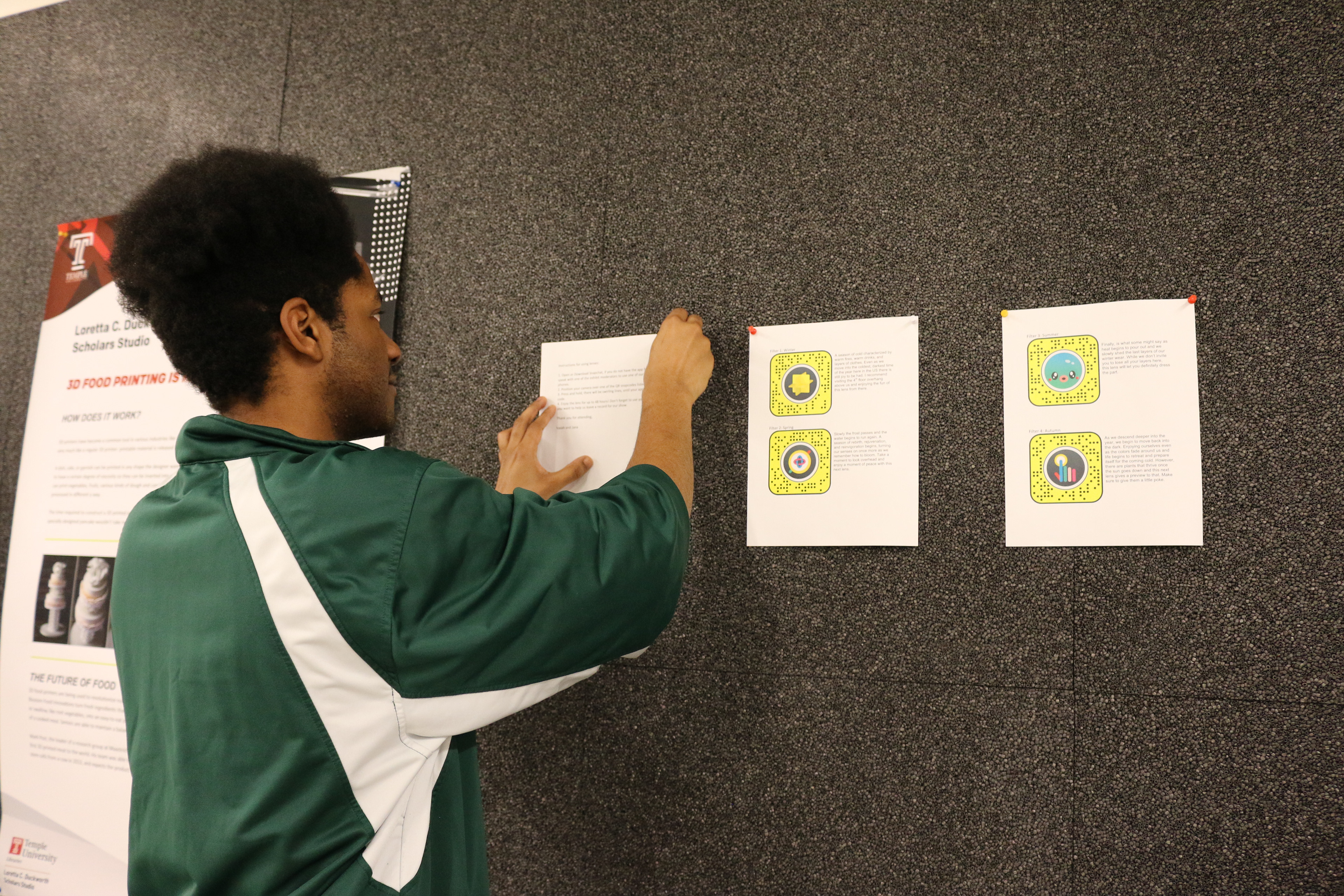
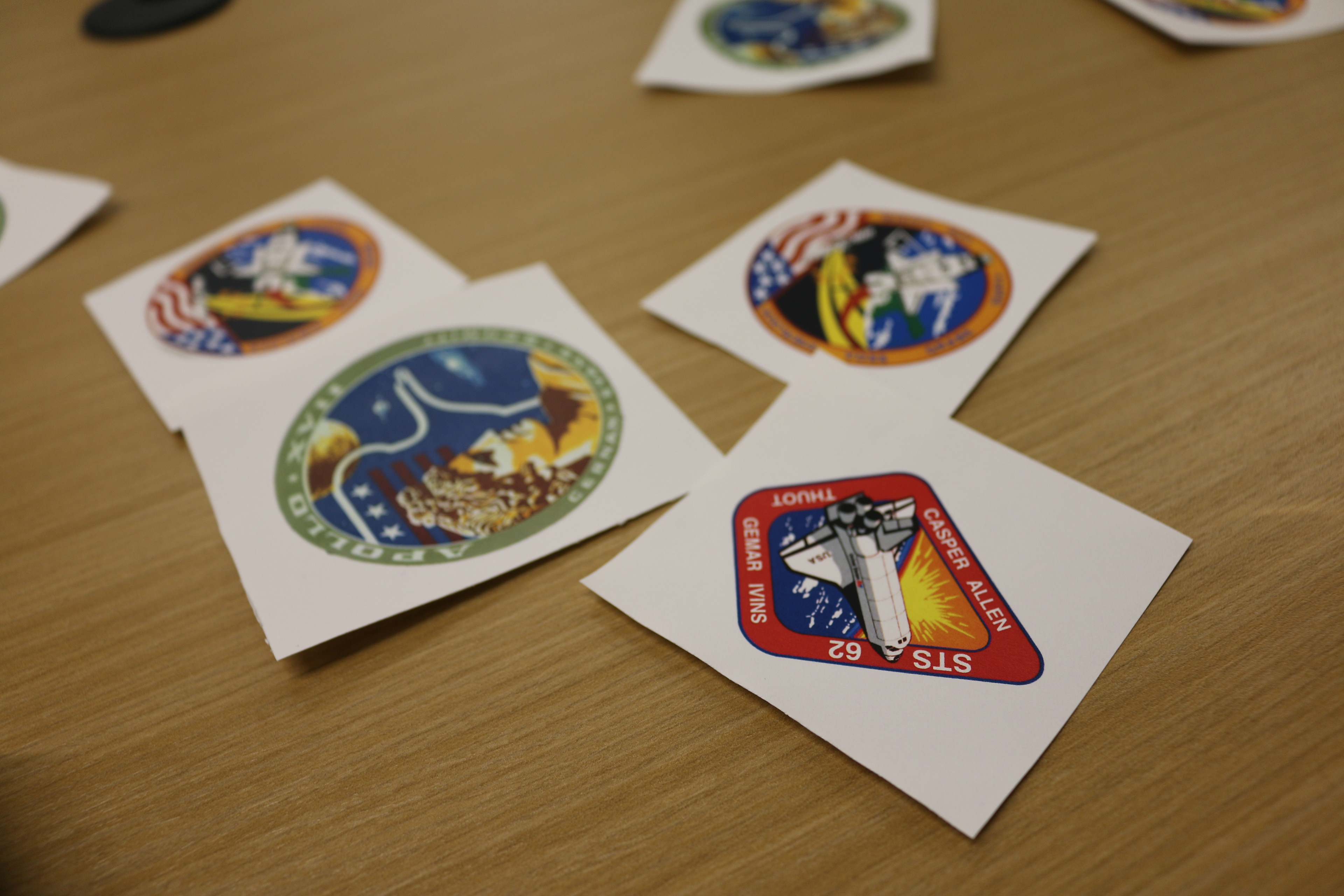
Student: Isaiah Gaffney, 2019, Augmented Reality application

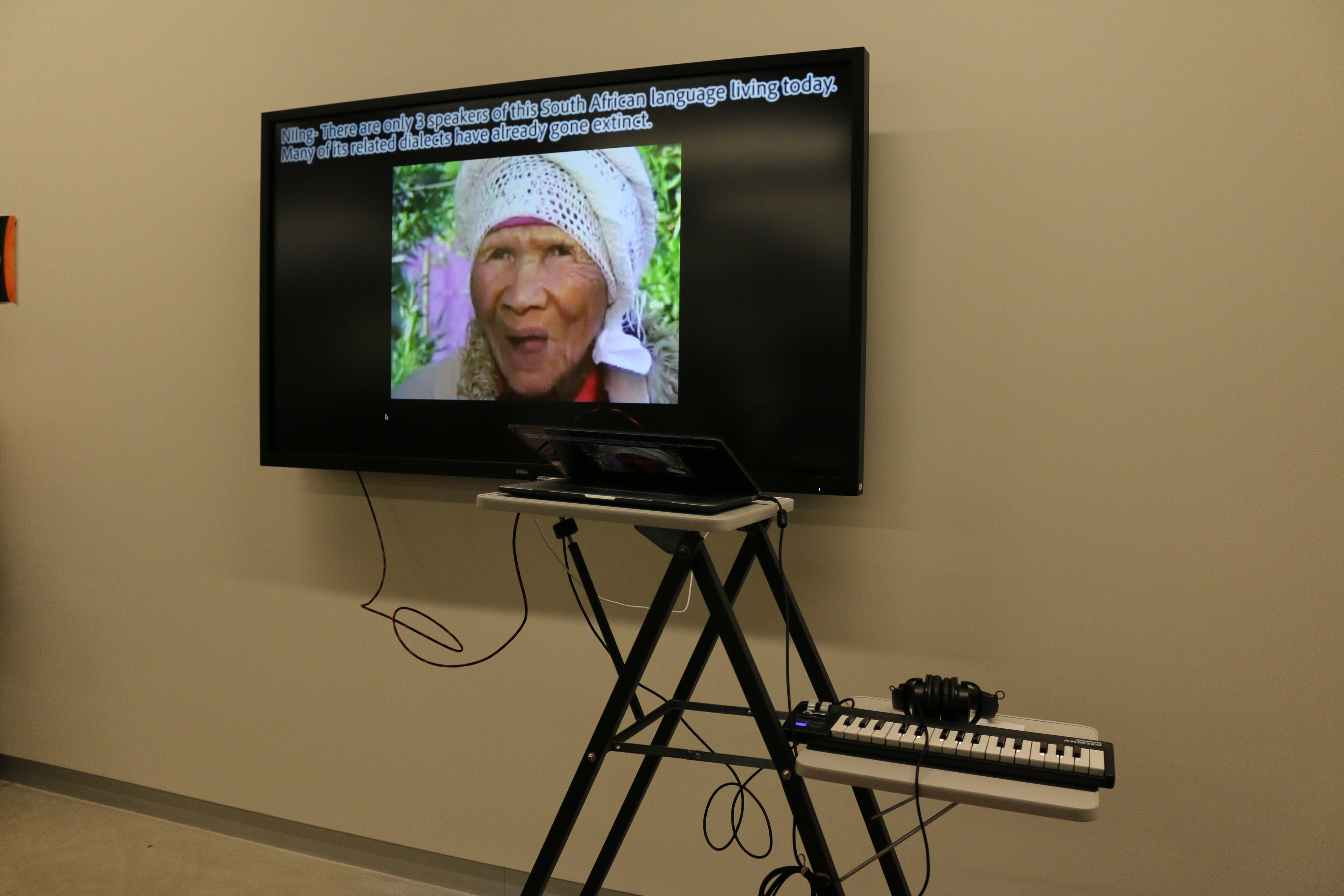
Student: Ben Susser, 2019, Interactive video controlled by user's sonic input
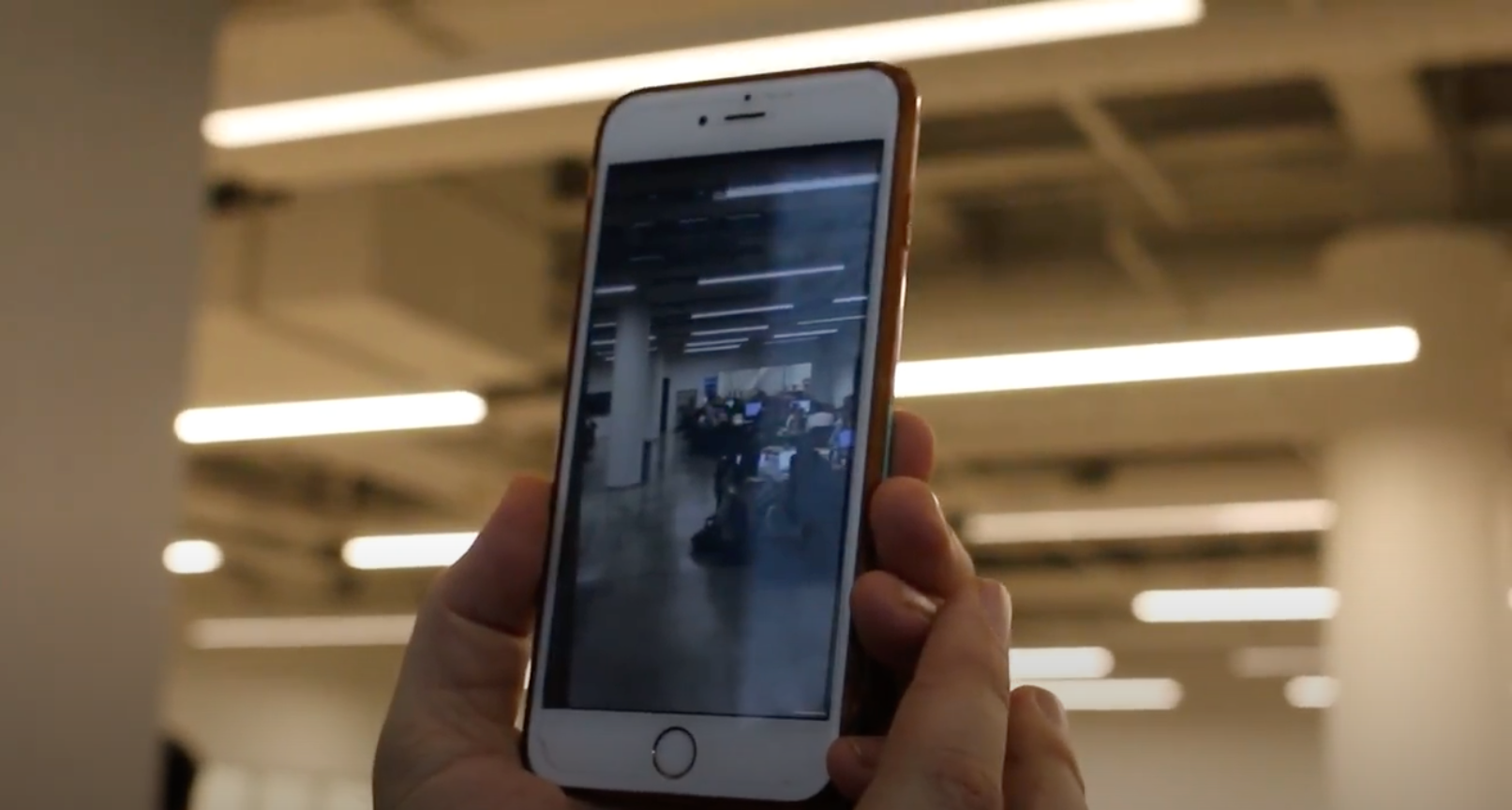

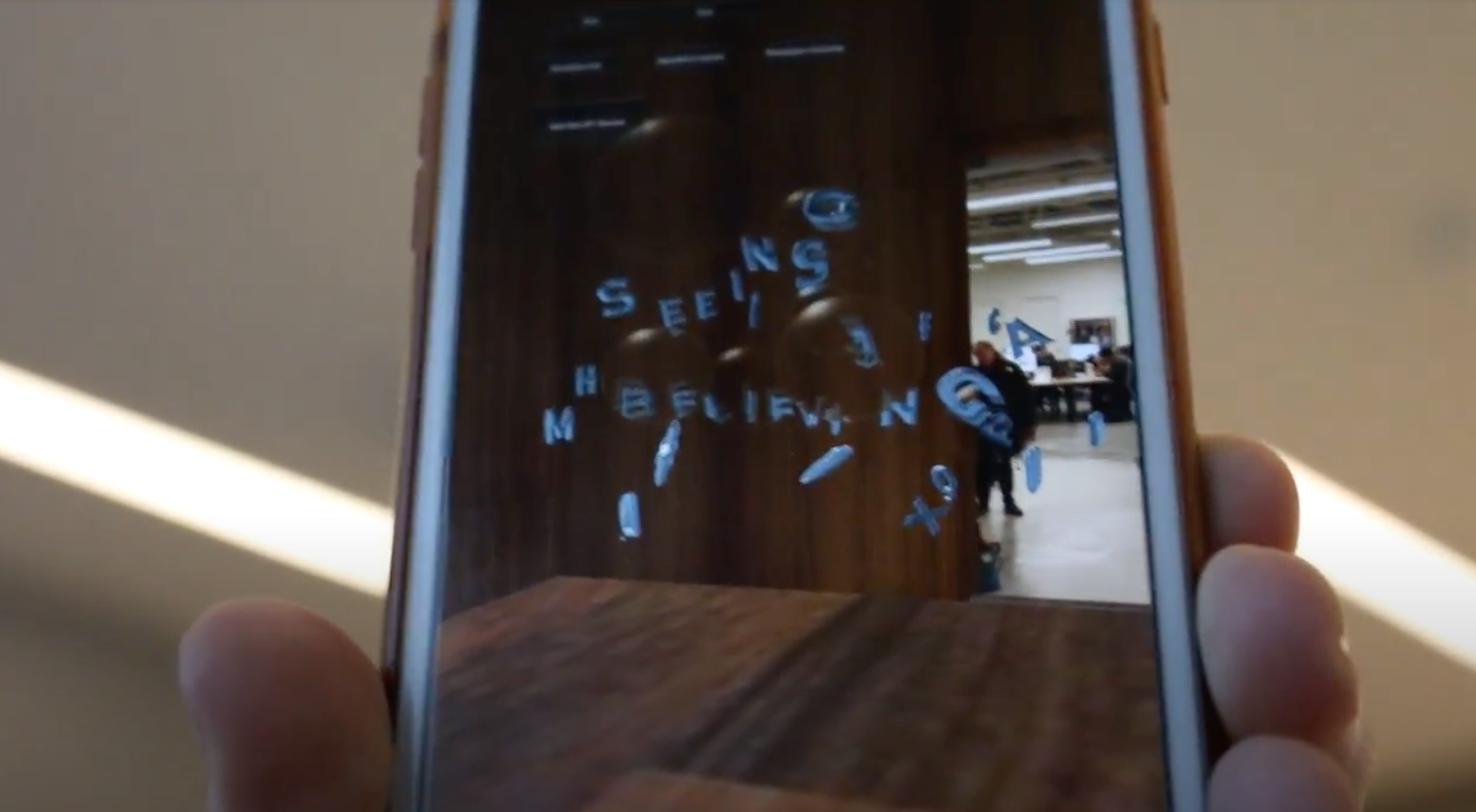
Student: ChiaHsien Lin, 2019, Site specific Augmented Reality experience developed for mobile application
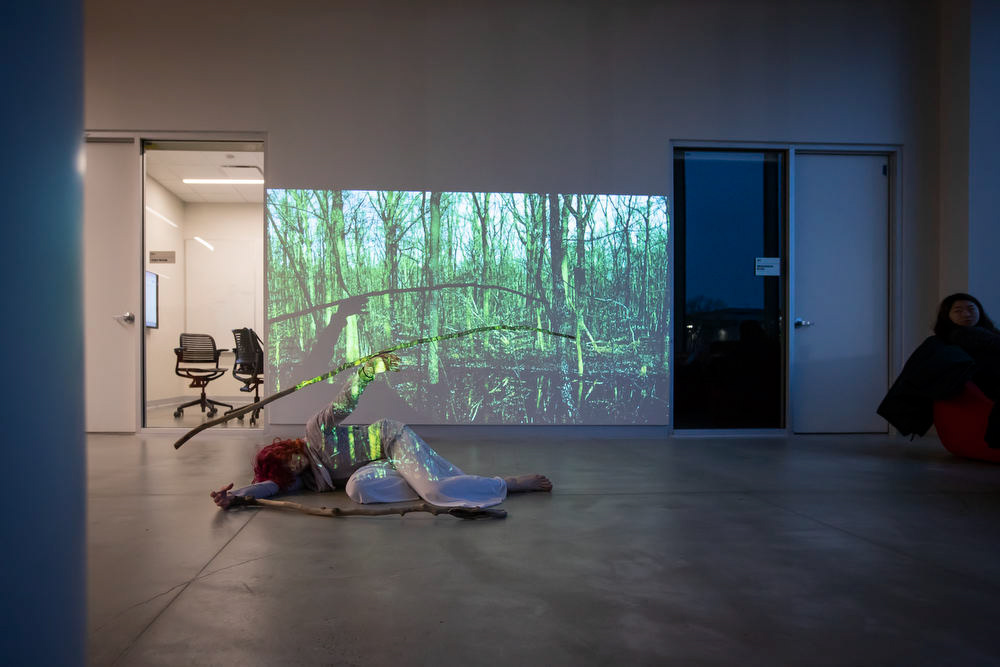

Student: Dawn States, 2019, Video projection and dance performance
Student: Jason Giaccone, 2019, Video projection
InFlux : Temple University 2019 . MA Media Arts Videography Final Exhibition at the Charles Library . Loretta C. Duckworth Scholars' Studio
Video Excerpt by student Lauren Miralles-Snow
Salma Garcia, , , Lauren Miralles-Snow, , and Jana Williams.
In-Flux : 2019 MA Media Arts Videography Pop-Up Exhibition
Dec 10, 2019 4-6pm With a video-dance performance at 4pm (3rd floor)
Charles Library 1900 N 13th St, Philadelphia, PA 19122
Dec 10, 2019 4-6pm With a video-dance performance at 4pm (3rd floor)
Charles Library 1900 N 13th St, Philadelphia, PA 19122
"This Pop-Up exhibition features the work of students: Ali Alajmi, Sitong Cao, Isaiah Gaffney, Salma Garcia, Jason Giaccone, ChiaHsien Lin, Lauren Miralles-Snow, Dawn States, Ben Susser, and Jana Williams.
Throughout this course students have examined the development of video art, its progressive impact on other forms of art, and its ultimate evolution into “media” art: groups of content around specific themes such as Laws and Constraints, Worldmaking, Interactivity vs. Participatory, Materiality vs. Immateriality, Virtual Storytelling, and Performance vs. Performativity helped students with their very own concern of unpacking different representations of reality and specifically developing ideas in response to the environmental humanities and climate fiction for this final project.
Please join us during the day or take a walk at the library on your own in celebration and appreciation of their efforts in exploring these important issues.”
Mina Zarfsaz
Adjunct Assistant Professor
Film & Media Arts Center for the Performing and Creative Arts
Temple University
Mina Zarfsaz
Adjunct Assistant Professor
Film & Media Arts Center for the Performing and Creative Arts
Temple University
This course is part of the one-year, 30-credit master's program in mediaXarts: Cinema for New Technologies and Environments which aims to prepare students for professions in the creative design industries, interaction design for public organizations, and emergent cinematic art forms, including interactive cinema, projection design for performance and architecture, media installation, user experience design, design for mobile media, net art, and social media. The mediaXarts program trains artists who seek to challenge cinematic and arts conventions through narrative, non-narrative, and hybrid forms.
This project was partly made possible by Innovative Teaching with Makerspace Technology Grant
STUDENT BIOS AND STATEMENTS crafted for the class:
——————— Lauren Miralles-Snow
Bio:
Lauren Miralles-Snow is a graduate student in Media Studies and Production at Temple University in Philadelphia, PA. She has an undergraduate degree in Psychology from Saint Joseph's University where she studied media effects. Lauren is currently working towards a career in media production as a producer, director, and editor of multi-media projects.
Statement:
Through my practice, my goal is to break the surface tension that exists in conversations around uncomfortable issues by using figurative methods of storytelling and highlighting the hidden duality that exists between concepts that appear to be two distinct alternatives. I hope to draw connections between phenomena that at the surface appear to be unconcerned with each other.
In-Flux projects:
Waste of Space (collaboration)
Do you ever wish you could take your final exam and chuck it into the atmosphere where you’ll never have to deal with it again? Well, don’t do that because it would add to the already exorbitant amount of space waste that’s already up there. However, feel free to bring it over to our intergalactic simulation, where you can toss all of your excess notes and information into our Fabricated Orbital for short.
Glitch Cycle (individual): A piece that places you in stormy weather inside a future digital inhabitance.
This exhibit depicts a “water cycle” in the future digital world that we will come to inhabit. We have programed evaporation, condensation, and precipitation in a digital world to mirror the one that occurred in our past grounded world on earth. Still, we must remember that the materials that make up the cloud in our future world are very different.
This exhibit depicts a “water cycle” in the future digital world that we will come to inhabit. We have programed evaporation, condensation, and precipitation in a digital world to mirror the one that occurred in our past grounded world on earth. Still, we must remember that the materials that make up the cloud in our future world are very different.
——————— Sitong Cao
Bio:
Hi! I am Sitong. I was born and raised in China. I am a film lover and I love all kinds of films. I like to explore the world videos can create.
Statement:
I’d like to examine the relationship between existence and disappearance. How things exist in different ways, different formats. In this project, my concern is the climate change problem. This would be a pop-up show, how long the ice lasts will depend on the climate these days. The ice is melting and vanishing in a way, at the same time, we can see flowers blooming, leaves falling which is a sense of life cycle. These lives will last as the ice is melting. I might also record the whole show.
In-Flux projects:
Untitled (collaboration)
Do you ever wish you could take your final exam and chuck it into the atmosphere where you’ll never have to deal with it again? Well, don’t do that because it would add to the already exorbitant amount of space waste that’s already up there. However, feel free to bring it over to our intergalactic simulation, where you can toss all of your excess notes and information into our Fabricated Orbital for short.
Untitled (individual)
This contains two parts. One is outdoor and one is indoor. The outdoor part is a pop-up show where I am projecting videos onto a huge ice block which shows the life cycle of nature. Combining with this, my collaborator ChiaHsien has an indoor AR work. As for the ice, it is real and it will disappear in the end. However, the AR world created by ChiaHsien is different.
——————— Jason Giaccone
Bio:
Jason is a student in the MediaXArts program at Temple. He grew up in upstate New York and has lived in the Philadelphia Area for 20 years. He worked as a web developer before becoming a student at Temple.
Statement:
My work involves repetition, memory, change and how those things interact. Specifically, our emotional responses to repetition and history. How we think about our interactions can influence our repetitive experiences and make them seem new. In addition, I’m interested in how reality can intrude in our constructed thoughts, feelings and attempts at escapism.
In-Flux projects:
Waste of Space (collaboration)
Do you ever wish you could take your final exam and chuck it into the atmosphere where you’ll never have to deal with it again? Well, don’t do that because it would add to the already exorbitant amount of space waste that’s already up there. However, feel free to bring it over to our intergalactic simulation, where you can toss all of your excess notes and information into our Fabricated Orbital for short.
False Portal (individual)
The central question my piece asks is how does what we think about nature affect our environment. My piece creates a projected ‘window’ between the two actual windows that look into the robotic parts of the library. The imagery in new window is meant to be a kind of portal. It starts by showing images of nature, past and present. The images will not only be of nature but will also include people, technology, and pollution. In addition to the video images book covers of climate science fiction from the library’s collection will be added to the video. The goal is to connect our recorded past and present with suggested possible futures.
Combining past and present imagery with future speculation invites the viewer to think about their own beliefs and to imagine themselves in the future. How is the viewer reacting to the imagery and to climate change itself? Does the viewer ignore the problem? Actively deny it? If they embrace that climate change is happening then what are they doing about it. The piece uses various transitions between sources of video to visually suggest error and mistakes and becomes more and more chaotic as it goes on. The viewer must think about images of the past and how those who took those images thought about the natural world.
——————— Ben Susser
Bio:
Ben is a Film and Media Studies student going for their MA in MediaxArts. His
work has generally revolved around sound, technology, and impermanence. Most of his artistic experiences have involved him sitting alone in front of a computer. He now looks forward to making art by sitting in front of a computer with his friends.
Statement:
Loss and impermanence are a part of life, and for many, they’re the most painful part. Strangely enough, one thing we can never lose as humans is loss and the feelings that come with it. Every day, loved ones, entire species, artistic works, and languages cease to exist and as society is spiraling into the throws of Climate Change; we are on our way to total destruction of everything we’ve ever known. How effective is technology at preserving humanity as we know it? Is it preserving humanity or just a facsimile of what we once were?
In-Flux projects:
Waste of Space (collaboration)
Do you ever wish you could take your final exam and chuck it into the atmosphere where you’ll never have to deal with it again? Well, don’t do that because it would add to the already exorbitant amount of space waste that’s already up there. However, feel free to bring it over to our intergalactic simulation, where you can toss all of your excess notes and information into our Fabricated Orbital for short.
Lost Samples (individual)
Somehow, though we are living in the age of information, we are losing languages, living things, and our own history faster than ever before. This keyboard is a machine that allows you to compose with time.
——————— Dawn States
Bio:
Dawn States started dancing at age five and fell in love with ballet. At age eighteen, Dawn experienced two severe spinal surgeries and stopped dancing. Through the tutelage of Axis Dance Company they returned to their passion of dance. Dawn is now invested in finding ways to make ballet more accessible and is attending Temple University for their MFA in Dance.
Statement:
My work is mainly concerned with accessibility and dance. My specific focus is on ballet and physical disability. I am interested in applying the idiom of ballet in different ways with bodies not typically seen in ballet. I am curious about the integrity of ballet, pedagogy and creating a dialogue around ballet and disability.
In-Flux projects:
Untitled (individual)
A durational improvised dance piece that interacts with the site of the library and incorporates natural elements of branches to connect the dancer back to the ecological world. All credit for the branch dancing is to Professor Merian Soto, who perfected and created this practice and shared it with the dancer.
——————— Isaiah Gaffney
Bio:
An MLA graduate student studying the cross sections of visual media, sexuality, and communication. In this show, I work using digital modeling software, Augmented Reality applications, and projection mapping.
Statement:
Climate is typically representative of the natural world and the ways in which meteorological phenomenon can exist. In my work I am exploring the ways in which climate presents itself in not only the physical but the social and cultural as well. What is it to be a space that represents a climate change politically? How do we assess contributions and magnitudes of the damage done to our spaces? In what ways might we begin to understand the union of small and large scale changes through areas such as our atmosphere, our homes, or through one another. These are the questions that were brought to the surface throughout our course and the areas I explore through the works presented in In-Flux.
In-Flux projects:
Waste of Space (collaboration)
Do you ever wish you could take your final exam and chuck it into the atmosphere where you’ll never have to deal with it again? Well, don’t do that because it would add to the already exorbitant amount of space waste that’s already up there. However, feel free to bring it over to our intergalactic simulation, where you can toss all of your excess notes and information into our Fabricated Orbital for short.
Four Seasons (collaboration)
As we move through the years our best way to keep track of time, besides our calendars, are the seasons. Spring, Summer, Fall, and Winter are each distinct by the way we celebrate their passing through holidays, enjoyment, food, and clothing. However, this distinction is not forever and slowly we are seeing traits of seasons bleed into one another as our stable ecosystems begin to break down. In Four Seasons, we are creating a way to both celebrate and mourn these memories by honoring the traditional items and activities that are a part of each season. Through video work and projection mapping by Jana Williams and AR experimentation by Isaiah Gaffney, we invite you to explore, reminisce, and play through each season, while you have the chance.
——————— Salma Garcia
Bio:
Salma Garcia Nolasco was born in San Salvador, El Salvador; her family immigrated to southeastern Pennsylvania in 2000. Subsequently, Garcia grew up an hour north of Philadelphia. She is set to obtain her BFA in Fibers and Materials Studies in May 2020 from Tyler School of Art and Architecture.
Statement:
Salma Garcia lives in a world where there is no such thing as authenticity. Everything exists as mimicry, and “fake” can be just as legitimate as “real”. This is a world where objects shapeshift and people transform— as if they are characters moving between masks in a play. This is a world where all interactions are treated as performances, all dialogues follow a script, all people are actors, and all objects are props. Every room behaves as a stage, where its objects wait patiently for the performers to walk in and act. Through this hyperbolic world-making, Garcia embraces the performance of life. These artificial environments and characters act as stand-ins for real life situations, allowing Garcia to further investigate personal interactions. Often using puppetry, mask making, and costume design, Garcia mimics her own body to drive these ideas of humanness. Subsequently, she creates extensions of the body to dissect and reveal aspects not otherwise expressed.
In-Flux projects:
Xochil (individual)
~1 minute video on loop
This project is addressing wilderness and the idea of exploring nature. The feeling of playfulness always existed when exploring nature in the past. Nature, as we know it now, feels mostly known to humanity; there is little to no exhilaration when going into nature. What was once a breathtaking and life changing experience, such as visiting the Grand Canyon, is now known to all of us, through photography and video. It feels like through documentation and studying the natural world, we’ve made the experience of wilderness into a sterile, expected reality. Nature is also increasingly disappearing. I’m interested in the idea of nature needing to be experienced as an artificially made thing, and through legends. For me, what remains of that acceleration is kept alive through folklore, and the myths of cryptids. Through the fantasy of legends, worlds and animals that are unknown, i feel acceleration. For my contribution to this group show, I’m interested in making a small install dealing with wilderness and fantasy. I want to make a small, mythical world using elements of nature that are recognizable.
Waste of Space (collaboration)
A group piece that is exploring the reconstruction/recycling of materials, by playing with the convoluted systems of production we utilize our large scale projection mapping and interactive animation take materials and resources people are willing to part with and digitizes them through a complex system of video methodology. Materials inserted will be sliced, diced, spun, run, and taken for a journey as viewers follow their objects along. Insertions can range from small objects, empty pens, broken usbs, useless papers etc to fairly large 3d objects such as binders, notebooks, and abandoned 3d prints. Once your object has been processed and digitized, you will be allowed to add it to our orbital graveyard, an animation program made using Unity Game Engine and Vuforia Augmented Reality apps linked to posters around the room.
——————— Jana Williams
Bio:
Jana Williams is an American documentary photographer and visual storyteller based in Philadelphia. Her practice in photography touches on ideas of spectatorship and the oppositional gaze, voyeurism and representations of the black female body throughout history, and the celebration of the everyday. Jana began her investigation with the camera taking self-portraits, photographs of family, and cultural events. Her goal as a photographer is to create a visual journal of her daily observations documenting life's rituals. Over the past five years, she has focused on making community-engaged art that documents the lives of the disabled, and LGBTQ youth of color.
Statement:
I'm a community based artist who creates visual stories that chronicle daily life, depicting the human condition, celebrations of local traditions and cultures. My work exists in a world of documenting various degrees of socially engaged art and portraiture, asking “What are the traumas experienced by a community or individual?” and “How do communities resolve past traumas?”
In-Flux projects:
Four Seasons (collaboration)
In thinking about issues pertaining to climate change, I’m sadly often oblivious to how climate change affects me directly. Living in a north-east coast landlocked city, I don’t experience Ice Caps melting, extreme droughts and water usage restrictions, massive forest fires, floods due to water swelling or a loss of resources due to any of these reasons. The best way for me to consider climate change is by thinking of the issue on a more human scale. In particular, drawing from my memory of the weather in Philadelphia, which at one point had clearly defined four seasons during the 80’s and early 90’s. In approaching this topic I question, “How does our collective memory of weather conditions from our past inform our belief and knowledge of climate change today? This work will explore memory and issues of climate change through Video and Projection Mapping and AR.
Waste of Space (collaboration)
A group piece that is exploring the reconstruction/recycling of materials, by playing with the convoluted systems of production we utilize our large scale projection mapping and interactive animation take materials and resources people are willing to part with and digitizes them through a complex system of video methodology. Materials inserted will be sliced, diced, spun, run, and taken for a journey as viewers follow their objects along. Insertions can range from small objects, empty pens, broken usbs, useless papers etc to fairly large 3d objects such as binders, notebooks, and abandoned 3d prints. Once your object has been processed and digitized, you will be allowed to add it to our orbital graveyard, an animation program made using Unity Game Engine and Vuforia Augmented Reality apps linked to posters around the room.
——————— ChiaHsien Lin
Bio:
My major for undergraduate is in radio and television under news department and I’m interested in making documenting films. Now I enjoyed playing VR and AR.
Statement:
I want to create a reality and surreal environment for people to explore. Understandings of different worlds can be relative because truths are changeable according to how people accept and feel them. In my work, message is hidden in two ways for the players to find out. Player has to move around the physical environment in order to figure out the “truth” hidden in augmented reality. It is possible that the players might not be able to figure out that there are hidden messages in the sea and that create diverse understanding.
In-Flux projects:
Melting Reality (collaboration)
An augmented reality piece which innovate players to walk around and explore the unreal and real blended space.
The work I’m going to present my final project with Sitong. She will be working on physical reality and I will focus my work on partial reality. The world I’m going to create through augmented reality is a surreal environment that seems not related to real world but is interacting with the physical. The main texture in this world will be glass and ice, which emphasizes the fragility of the environment. Every cube will present a different world, either it is an imaginary one or a world that exists in our reality. Inside the augmented reality, the viewer will be trapped by flooding but when all the water evaporate, words or sentences will show up. Viewer can move around the 3D object in order to find a right angle for the sentence.
——————— Ali Alajmi
Bio:
I am an international student and this course added to me a lot of information and I am getting huge improvement.
In-Flux projects:
Waste of Space (collaboration)
A group piece that is exploring the reconstruction/recycling of materials, by playing with the convoluted systems of production we utilize our large scale projection mapping and interactive animation take materials and resources people are willing to part with and digitizes them through a complex system of video methodology. Materials inserted will be sliced, diced, spun, run, and taken for a journey as viewers follow their objects along. Insertions can range from small objects, empty pens, broken usbs, useless papers etc to fairly large 3d objects such as binders, notebooks, and abandoned 3d prints. Once your object has been processed and digitized, you will be allowed to add it to our orbital graveyard, an animation program made using Unity Game Engine and Vuforia Augmented Reality apps linked to posters around the room.
